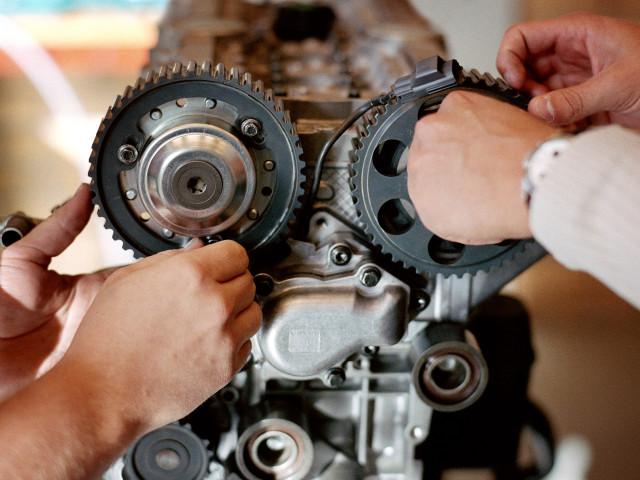To acquire knowledge about the basic principles and terminology of solid mechanics, mechanical behaviour of engineering materials, methods to solve important types of solid mechanics problems and ability to apply this knowledge for solution of simple problems of practical importance.
SE1055 Strength of Materials and Solid Mechanics, Basic Course with Energy Methods 9.0 credits

Information per course offering
Choose semester and course offering to see current information and more about the course, such as course syllabus, study period, and application information.
Information for Spring 2026 Hållf CTFYS programme students
- Course location
KTH Campus
- Duration
- 13 Jan 2026 - 1 Jun 2026
- Periods
Spring 2026: P4 (3 hp), P3 (6 hp)
- Pace of study
33%
- Application code
61495
- Form of study
Normal Daytime
- Language of instruction
Swedish
- Course memo
- Course memo is not published
- Number of places
Places are not limited
- Target group
- No information inserted
- Planned modular schedule
- [object Object]
- Schedule
Contact
Course syllabus as PDF
Please note: all information from the Course syllabus is available on this page in an accessible format.
Course syllabus SE1055 (Spring 2017–)Content and learning outcomes
Course contents
Intended learning outcomes
In design and development of advanced products and process, it is important to assure the functionality. All products and processes are required to have the correct stiffness and not to break under service. In this course, you will learn about the mechanical properties of materials and components and how this knowledge is used to design products and processes with respect to stiffness and strength. Knowledge in strength of materials and solid mechanics design will make product development much more efficient since you will be able to answer question such as ”Does it break?” or ”Will there be too much deformations?” even before the prototypes has been built. The course contains basic knowledge and theory for continued work in mechanical engineering and the mechanical modelling of materials.
After the course, the participant should be able to
- determine stresses and deformations in truss structures, frames and composites using models for rods and beams
- determine stresses and deformations in axisymmetric structures.
- determine the loading applied on a crack.
- be able to determine the applicability of the models above and also understand the order of the approximations included in the models.
- account for energy methods in solid mechanics and use FEM for design of basic problem.
- select materials based on solid mechanics criteria in a sustainable perspective.
- analyse one dimensional dynamic problems.
Literature and preparations
Specific prerequisites
SG1112 Mechanics I or the equivalent
Literature
H. Lundh, Grundläggande hållfasthetslära. Hållfasthetslära , KTH, 2000.
Exempelsamling i hållfasthetslära, KTH, Hållfasthetslära, 2009.
Handbok och formelsamling i hållfasthetslära, KTH, Hållfasthetslära, 2014.
Examination and completion
Grading scale
Examination
- INL1 - Assignment, 1.0 credits, grading scale: P, F
- TEN1 - Examination, 6.0 credits, grading scale: A, B, C, D, E, FX, F
- DIA1 - Diagnostic Task, 2.0 credits, grading scale: P, F
- LAB1 - Laboratory, 0.0 credits, grading scale: P, F
Based on recommendation from KTH’s coordinator for disabilities, the examiner will decide how to adapt an examination for students with documented disability.
The examiner may apply another examination format when re-examining individual students.
If the course is discontinued, students may request to be examined during the following two academic years.
Other requirements for final grade
Written exam (TEN1; 6 university credits)
Diagnostic task (DIA1; 2 university credits)
Laboratory (LAB1; 0 university credits)
Assignment (INL1; 1 university credit)
Examiner
Ethical approach
- All members of a group are responsible for the group's work.
- In any assessment, every student shall honestly disclose any help received and sources used.
- In an oral assessment, every student shall be able to present and answer questions about the entire assignment and solution.